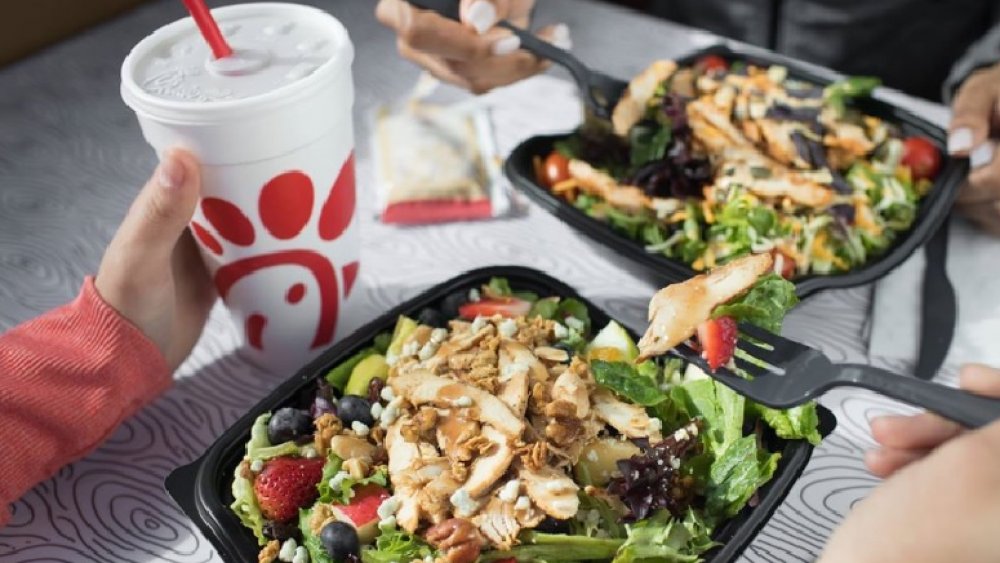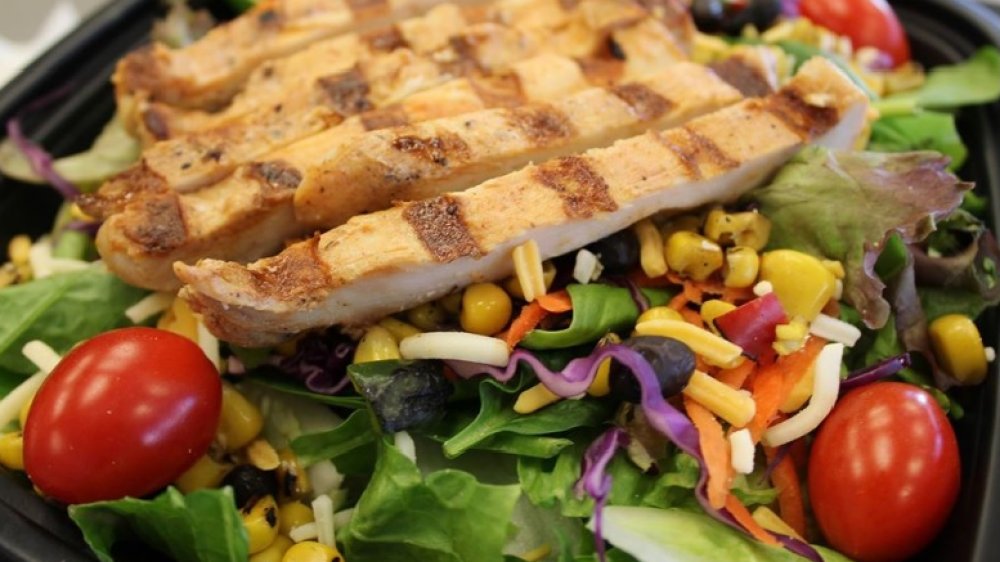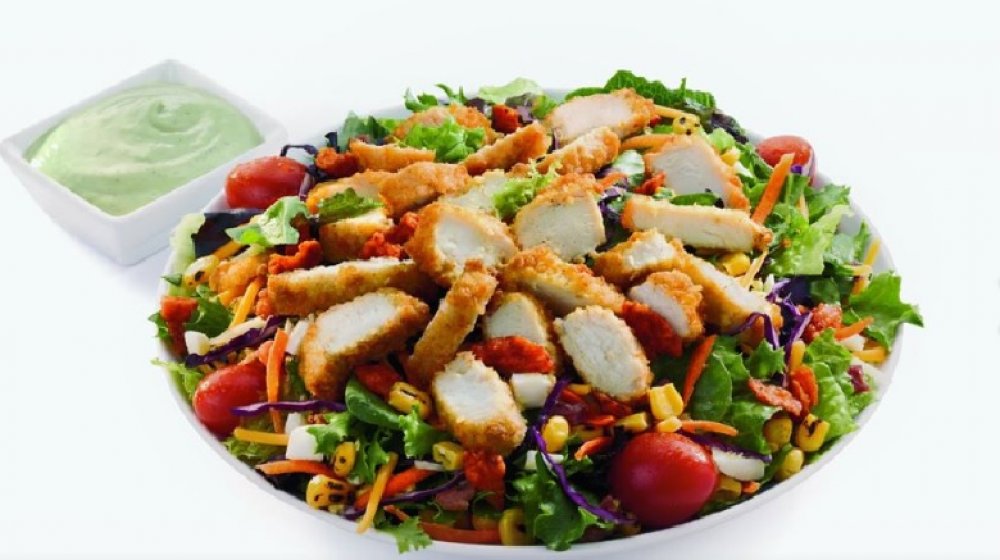The Ingredient You'd Be Surprised Is Inside The Chick-Fil-A Salad You're Eating
Chick-fil-A's biggest claim to fame is, hands-down, their irresistible fried chicken sandwiches. But, when a calorie-laden, carb-fest just will not do, and you are in pursuit of a lighter option, Chick-fil-A's menu offers a tempting array of salads to choose from. There is a Market Salad brimming with fresh fruit and granola, a Cobb Salad that pairs with an avocado ranch dressing, and a Spicy Southwest Salad, full of hot and sweet peppers, corn, and black beans. Kale has even taken up residence at this fast food gem, in the Kale Crunch Side salad.
This all sounds like a recipe for guilt-free nourishment, with fast-food convenience to boot. Except, everything is not as it seems in these leafy greens. Would anyone care for a dash of synthetic color additives? Sodium out the wazoo? From sneaky ingredients, to boozy dressings and sodium-bombs, we'll break down what's really hiding in your Chick-fil-A salad.
There's some unusual and not-so-natural ingredients in your Chick-fil-A salad
Along with loads of hearty vegetables, Chick-fil-A's Spicy Southwest Salad also lists red 40 and blue 1 among the ingredients in the tortilla strips. These food dyes, according to Healthline, are color enhancers which are approved by the FDA, but potentially pose some health risks, such as allergies and migraines. In moderation, food dyes are considered safe but some folks are more sensitive to the effects than others and should keep an eye out for them.
Cellulose turns up in the blue cheese that tops the Market Salad. It's actually a common anti-caking ingredient in cheese. Cellulose is plant fiber, sometimes made by grinding up wood and extracting the cellulose. It's FDA-approved, but is still a little weird to consider in your salad.
Also, definitely surprising for Chick-fil-A is the ingredients in the Kale Crunch Side Salad's vinaigrette list: white wine. While it's probably not risky to serve a dressing made with white wine to the general public (the amount per serving is pretty insignificant), Chick-fil-A has a reputation for their conservative Christian beliefs, and alcohol can be controversial in Christian culture (via Crossroad Christian).
Your Chick-fil-A salad's sodium content is cause for pause
How about that Cobb Salad? A bed of greens topped with cheese, bacon, hard-boiled egg, corn, and tomatoes certainly eats like a meal but we're not so sure it qualifies as a healthy one. As with all Chick-fil-A salads, this one comes with the option to top it with grilled or fried chicken. If you opt for the latter, this salad clocks in at 540 calories, 29 grams of fat, and 1700 milligrams of sodium, making it less healthy than that famous fried chicken sandwich you might have preferred instead.
Chick-fil-A's Cobb Salad supports the CDC's assertion that more than 70 percent of our sodium intake doesn't come from our home kitchen, but rather from restaurants and prepackaged, processed foods. If you're watching your diet, be sure to check the nutrition information before you dig in. At the end of the day, Chick-fil-A is a fast food restaurant and weird additives and nutritional potholes, even in salads, are somewhat part of the norm. Despite the drawbacks, don't worry too much; a salad isn't the worst choice you could be making at Chick-fil-A.


